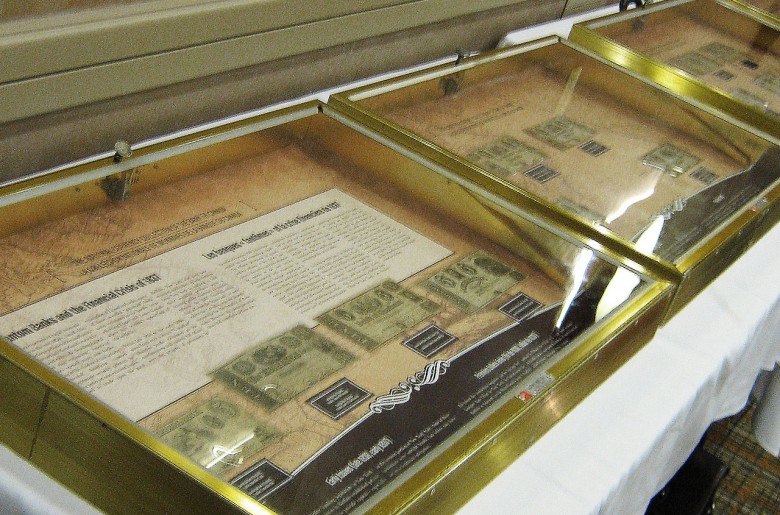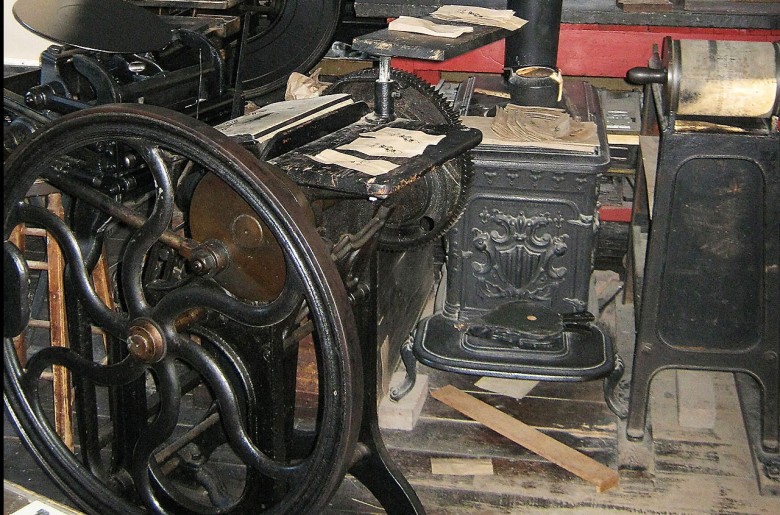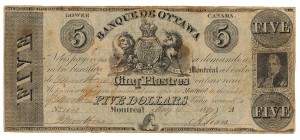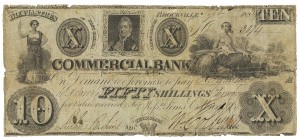One blog, two curators
Since 1950, the Royal Canadian Numismatic Association (RCNA) has been Canada’s premier association of money collectors. Every year, it holds a convention for collectors, dealers and those with even a mild interest in the hobby to discuss, examine and acquire these fascinating bits of material culture. The 2014 show took place in Mississauga, Ontario.
The sun rises over Mississauga.
Since the convention is held in a different part of the country each year, it offers an ideal opportunity for the Bank of Canada Museum to share a part of the National Currency Collection with Canadians. This year, we decided to tell the story of Canada’s phantom banks and the financial crisis of 1837, which affected both Canada and the United States.
Phantom banks were scams concocted by dubious American businessmen using notes from fictitious Canadian banks to dupe the American public throughout the border states from Vermont to Ohio. The Bank’s Chief Curator gave the talk and a display was set up in conjunction with Paul's presentation, giving attendees a chance to see real examples of these rare notes. The subject was in keeping with the convention theme of “Hands Across the Border,” which celebrated the co-operation and camaraderie between the RCNA and the American Numismatic Association. Elaborating on the convention’s theme, the RCNA Educational Symposium consisted of presentations that touched on Canadian and American numismatics - a wonderful opportunity for participants from the two countries to share their knowledge in good fellowship.
The Bank of Canada Museum’s mini-exhibition on phantom banks in the exhibit hall
Collectors exhibited a wide variety of material, including bank notes from China and British Columbia; merchant tokens from Orillia, Ontario; and papal medals, to name a few. The Royal Canadian Mint displayed recent products at their booth and a professional engraver was on hand to discuss the manufacturing process. A representative from the Currency Department of the Bank of Canada gave a talk on the security features of Canada’s new polymer notes. For the guests of convention participants, the RCNA hosted tours to Black Creek Pioneer Village and Artcast, a fine art foundry for sculptors.
Antique printing presses at the Black Creek Pioneer Village print shop
Of course, the curators went shopping–but not at the outlet mall. They were able to acquire some very interesting and significant pieces for the National Currency Collection.
The Museum Blog
Whatever happened to the penny? A history of our one-cent coin.
By: Graham Iddon
Good as gold? A simple explanation of the gold standard
By: Graham Iddon
Speculating on the piggy bank
By: Graham Iddon
New acquisitions—2024 edition
Money’s metaphors
Treaties, money and art
Rai: big money
By: Graham Iddon









